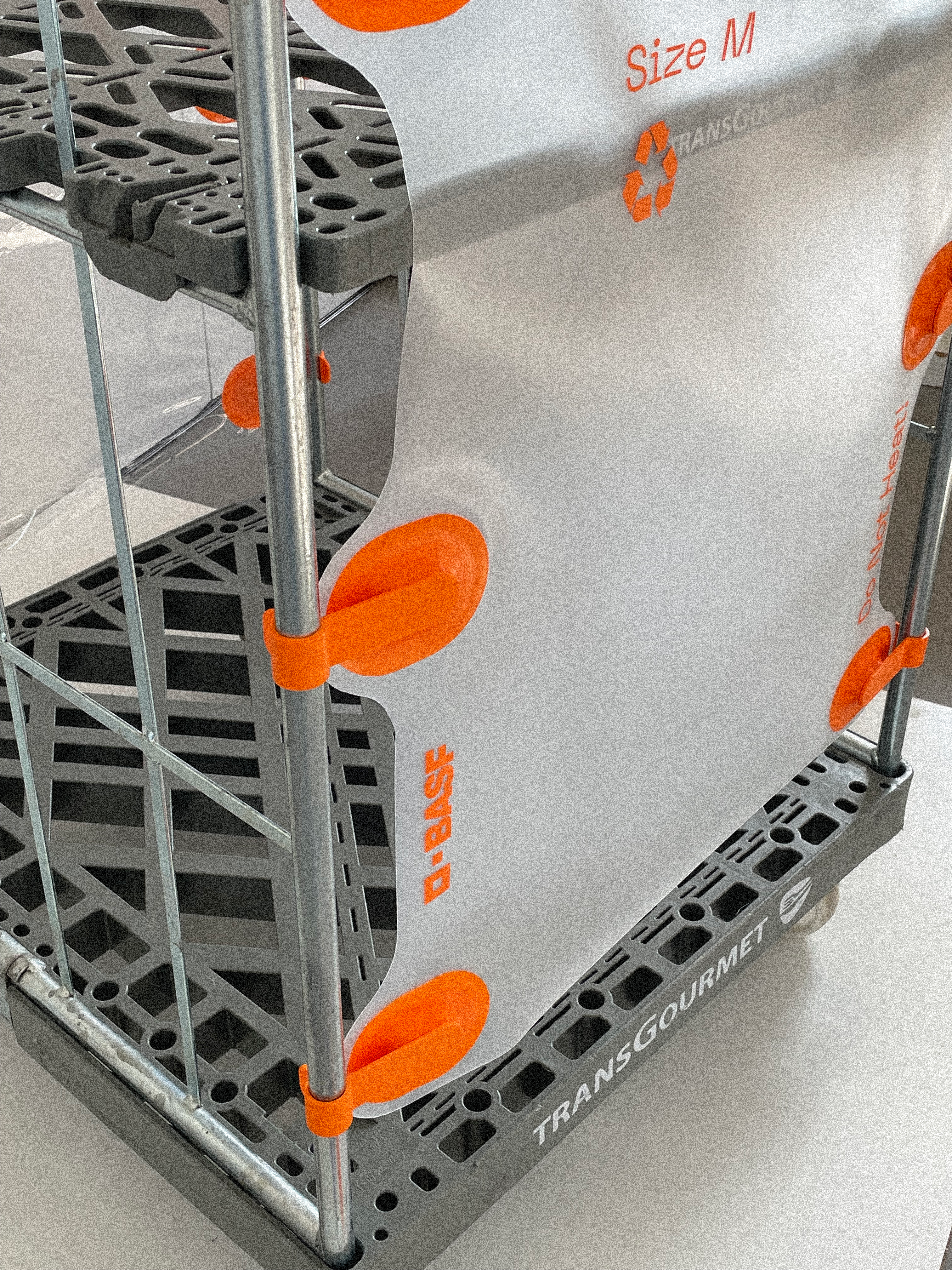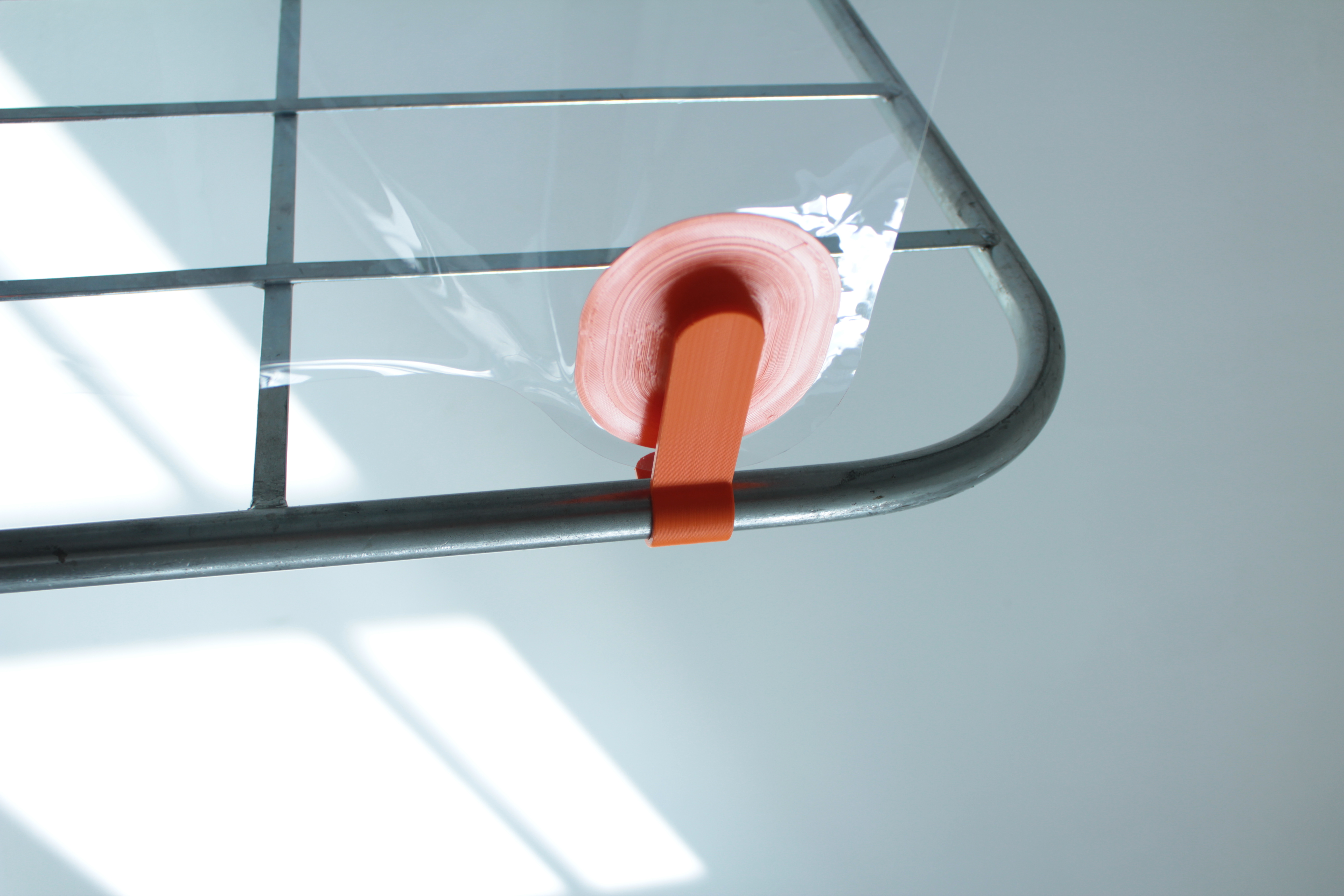»Although it’s a student project, Wrap it up stands apart for its superior design and impressive user experience. The project shows that design’s cross-disciplinary nature predestines it to help solve the problem of a lack of recyclable materials and reduce the materials required. At the same time, it could also tackle design and handling from the user’s perspective.«
Prof. em. Günter Horntrich

Three questions for Lukas Henneberger
How did the idea for Wrap it up come about?
The idea originated from a semester project on the product design course at Berlin University of the Arts in collaboration with the BASF Creation Center. On visits to supermarket stockrooms, I noticed the enormous quantity of packaging waste the associated logistics caused, which staff find annoying and consumers don’t realise. So, my idea was to develop a mono-material product that could be reused and was more user friendly.
What was your personal highlight in the Wrap it up development process? Was there a low point?
I experienced a kind of low point at the beginning of the product development process, as it took some time to find the right idea. It was important to me to design a product or process that was not greenwashing. Once it became clear in which direction it should go, everything developed quickly. By talking to other people about the project and the issues that arose, I was reassured that I was on the right track. In addition to a presentation at the Vitra Design Campus, the fact that Wrap it up won the German Ecodesign Award was of course an absolute highlight.
Where do you see your project in the next five years?
Wrap it up’s purpose is to play a role in optimising logistics processes sustainably. The mono-material product is reusable, which taps into new opportunities for the product worldwide. The goal is to establish Wrap it up on the market so that it’s commercially and ecologically viable. It would be a real triumph if reusable stretch film became the industry norm. In addition to supermarkets, single-use stretch film is also common in many other areas of logistics, not just in conjunction with trolley carts. Over the next few years, plenty more iterations and potential applications could be developed.
